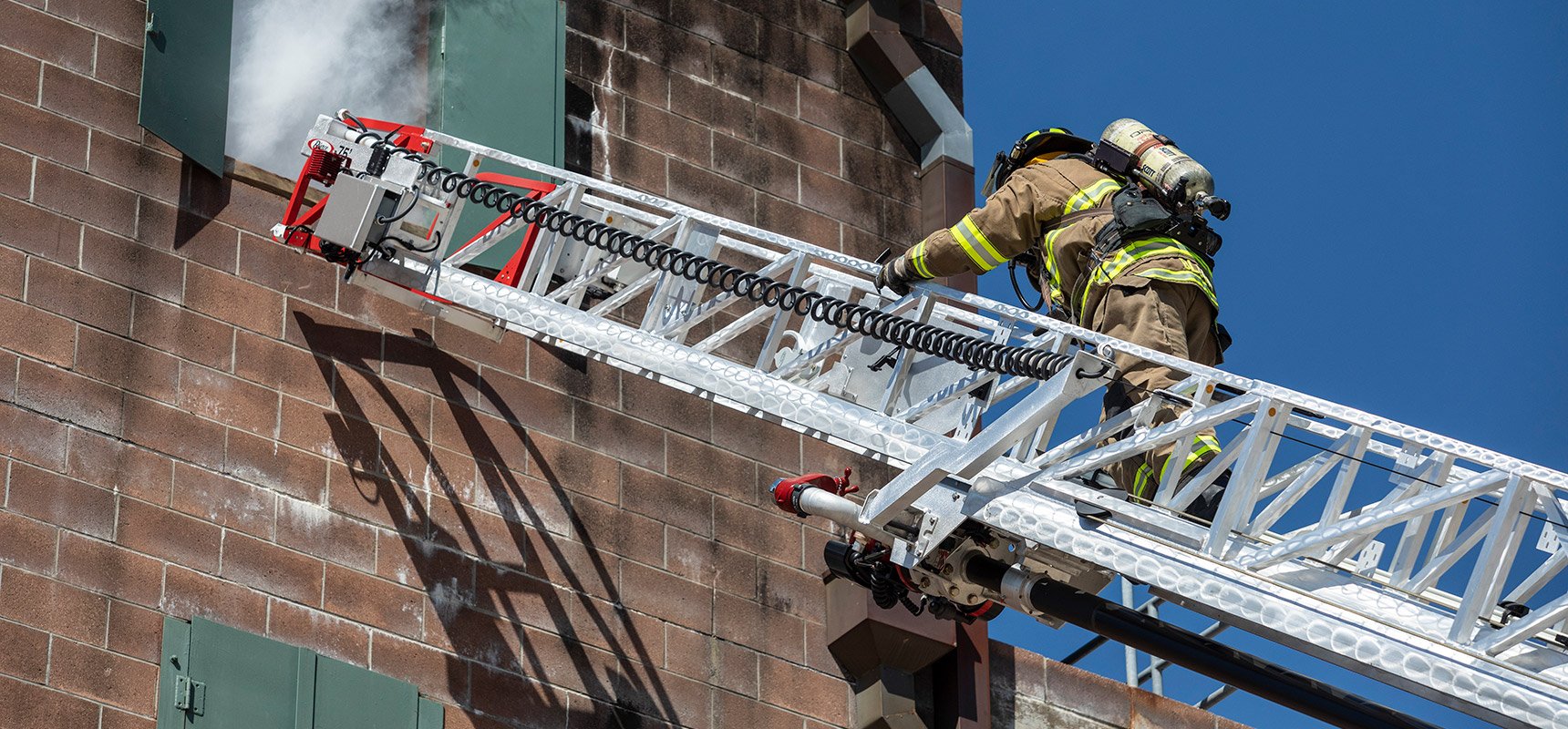 Fire scenes expose emergency personnel, their turnout gear, SCBAs, and fire apparatus to a vast array of chemical and biological contaminants.
Fire scenes expose emergency personnel, their turnout gear, SCBAs, and fire apparatus to a vast array of chemical and biological contaminants.
Smoke, soot and debris pose potentially deadly carcinogenic threats. Occupational cancer was responsible for two-thirds of career firefighter line-of-duty deaths from 2002 to 2019.
In light of that, fire truck decontamination has taken on new urgency, with comprehensive actions to decontaminate apparatus and gear.
What is Fire Truck Decontamination?
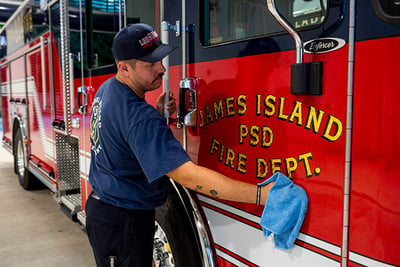 Fire truck decontamination is the process of thoroughly rinsing gear and equipment on-site, then transporting contaminated gear back to the station in a way that maintains separation from personnel. The goal is to minimize lingering carcinogen exposure as well as the risk of cross-contamination, either within the cab of the truck, within facilities, or directly with people back at the firehouse.
Fire truck decontamination is the process of thoroughly rinsing gear and equipment on-site, then transporting contaminated gear back to the station in a way that maintains separation from personnel. The goal is to minimize lingering carcinogen exposure as well as the risk of cross-contamination, either within the cab of the truck, within facilities, or directly with people back at the firehouse.
Procedures to decontaminate apparatus address both the exterior and interior of the apparatus.
Fire Truck Cab Decontamination
A clean cab is critical because all of the firefighters assigned to a respective rig are inside the cab for pre-planning and when traveling to and from the scene. To protect firefighter’s ongoing health and safety, the cab must be as free as possible of dirt and germs as well as potential carcinogens. That requires surfaces that are smooth, resistant to moisture and easy to clean.
Regular interior cleaning is a two-step process that takes place at the firehouse.
- All surfaces are cleaned from the top down, using soap or an appropriate detergent and water to physically remove dirt, germs or other substances.
- Surfaces are disinfected to kill any remaining germs.
This process should include not only structural elements such as walls and floors and seating but everything firefighters touch (screens, radios, headsets, etc.).
Exterior Decontamination
Cleaning the exterior of a fire truck has always been a point of pride for fire departments, but now the goal of thorough cleaning is more than just cosmetic.
In an effort to minimize contaminants and reduce exposure to on-scene toxins, fire truck washing might happen after every call, at shift change, or once a day, depending on each fire department’s policy and callout frequency.
Why Is Fire Truck Decontamination Critical?
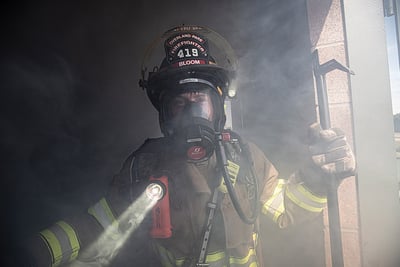 Historically, fire departments were not aware of the dangers of toxin exposure. In fact, the Firefighter Cancer Support Network (FCSN) described a pervasive cycle of contamination in which:
Historically, fire departments were not aware of the dangers of toxin exposure. In fact, the Firefighter Cancer Support Network (FCSN) described a pervasive cycle of contamination in which:
- Firefighters -- highly likely to be exposed to contaminants on scene -- would stow their contaminated gear in the cab to return to the station.
- Dangerous fumes would fill the air in the cab, and particles would transfer from the gear to interior surfaces.
- Contaminated gear would be moved into the fire station, where it would continue to shed particulates and off-gas toxins.
This cycle put everyone at risk of exposure to carcinogens—not just firefighters on scene but personnel back at the firehouse, families (as firefighters unknowingly brought carcinogens home), and anyone visiting the station.
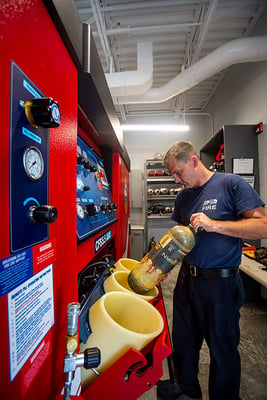
The International Association of Firefighters conducted a study that found gloves tend to be even more highly contaminated than turnout coats. Researchers reported that “routine gross decontamination [of PPE and equipment] appeared to reduce many of the contaminants.” This led to increased efforts to conduct on-site decontamination.
In response, Pierce Manufacturing formed a partnership with the FCSN called the Carcinogen Awareness and Reduction to Exposure, or CARE, initiative. CARE best practice recommendations focus on keeping the cab interior clean, with four goals, including to:
- Enhance safety.
Cabs should feature easy-to-clean surfaces instead of cloth that retains dirt and moisture. Headliner, walls, engine tunnel and drain tube surfaces can be vinyl or painted. Flooring aluminum treadplate or durable vinyl are best for flooring. In addition, cabinet seals, fans and HVAC systems with HEPA filters can help clean interior air and vent it to the outside. - Minimize exposure.
Zip-off seat covers made of fabric that meets interior materials safety specs can be removed for cleaning. Foam-based seats are seamless and do not require covers. Velcro-mounted temporary contaminant mitigation covers can also be used in emergency situations, then removed for washing. - Reduce carcinogens.
Contaminated gear should never be placed inside the cab. SCBAs and all other soiled gear should be stored externally, in their own designated compartments. Fire trucks can be outfitted with slide-out drop-down trays, slide-out tool boards, fender, transverse and/or body compartments for this purpose. EMS compartments can also be used, as can hatch or hose compartments if needed. - Clean soiled gear on site.
Gross on-site decontamination reduces risk. Fire trucks can be outfitted with warm water rinse or garden hose outlets and a showerhead outlet, allowing firefighters to rinse off their gear and themselves before leaving the scene.
Many departments are now using mobile decontamination units to further improve on-scene fire truck decon. These units follow a hazmat approach that ensures:
- Firefighters spend the least amount of time in contaminated gear.
- Firefighters can distance themselves from contamination by rinsing and removing gear as soon as possible.
- Other personnel (including station personnel and family) are protected from exposure.
Mobile decontamination vehicles are designed to accommodate turnout gear, SCBAs, helmets, gloves and boots as well as other equipment.
Recent Delivery Featuring Clean Cab Initiatives
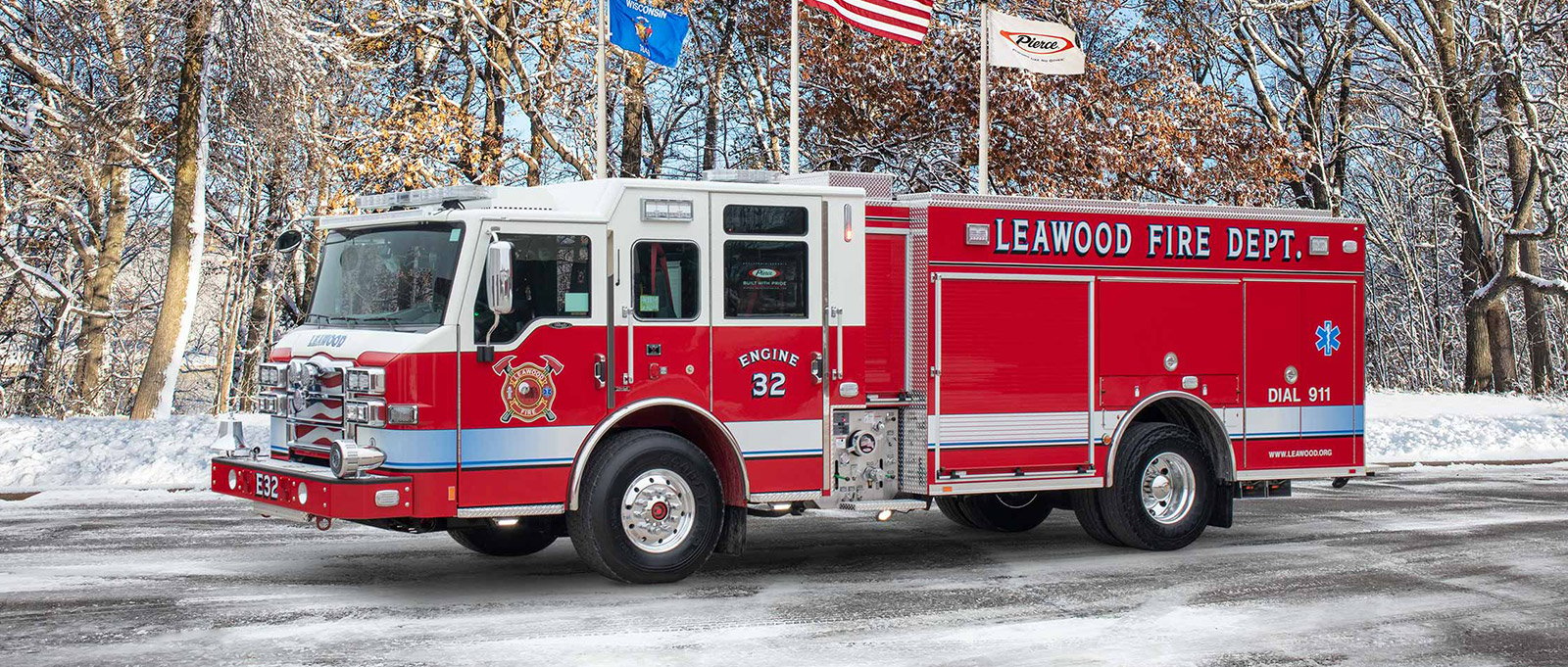 Pierce® Velocity® Pumper for Leawood Fire Department has many decontamination and clean cab features, including:
Pierce® Velocity® Pumper for Leawood Fire Department has many decontamination and clean cab features, including:
- Easy to clean seats
- Diamond plate treads for easy cleaning
- A storage area on the outside of the truck designated for dirty air packs
- A warm water rinse decontamination system featuring a 25-gallon water tank for gross decontamination on scene, including the ability to hose off air packs and bunker gear.
Watch this walk-around video to learn more.
Best practices in fire truck decontamination, such as those outlined above and in clean cab advancement initiatives, can help protect firefighters as they work tirelessly to protect their communities.
How does your fire department initiate fire truck decontamination? Let us know in the comments!